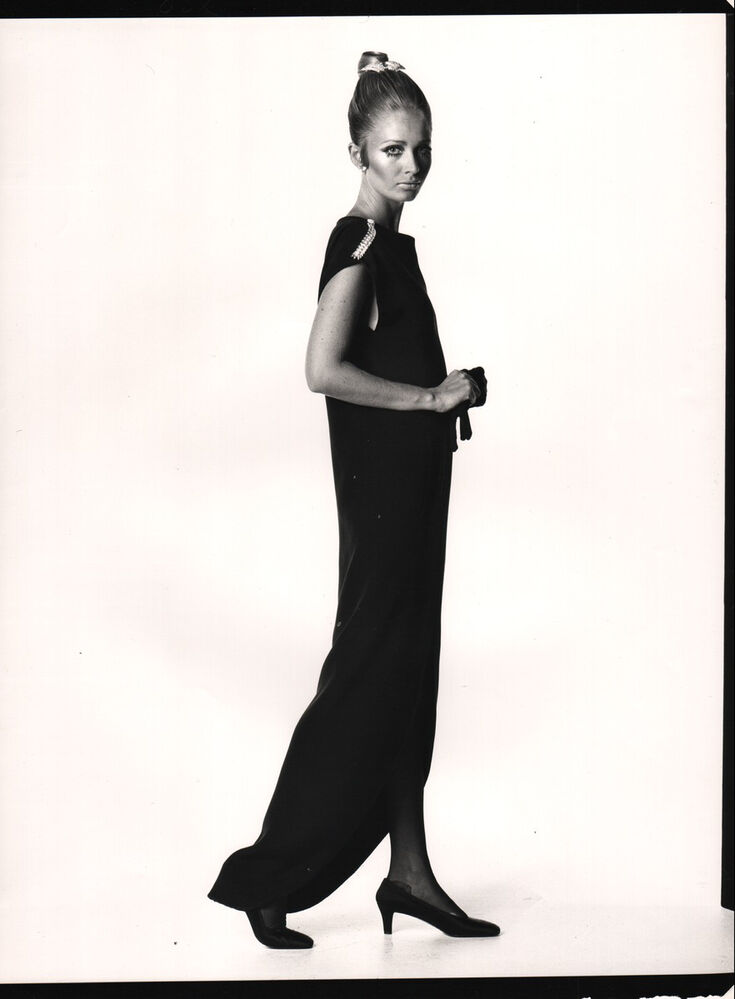
Moteopptak med Jean Shrimpton / Fashion shoot with Jean Shrimpton, 1960-tallet
Irving Penn
1917 - 2009
36.8 x 29.5 cm.
© Irving Penn
Om fotografen
Irving Penn attended the Philadelphia Museum School of Art from 1934 to 1938, where Alexey Brodovitch taught him advertising design. While training for a career as an art director, Penn worked the last two summers for Harper's Bazaar magazine as an office boy and apprentice artist, sketching shoes.
His first job on graduating in 1938 was art director of the Junior League magazine, later he worked in the same capacity for Saks Fifth Avenue department store. At the age of 25, he quit his job and used his small savings to go to Mexico, where he painted a full year before he convinced himself he would never be more than a mediocre painter.
Returning to New York, he won an audience with Alexander Liberman, art director of Vogue magazine. He hired Penn as his assistant, specifically to suggest photographic covers for Vogue. Liberman later asked Penn to take the pictures himself. Penn arranged a still life consisting of a big brown leather bag, beige scarf and gloves, lemons, oranges, and a huge topaz. It was published as the Vogue cover for the issue of October 1, 1943, and launched Penn on his photographic career.
Penn soon demonstrated his extraordinary capacity for work, versatility, inventiveness, and imagination in a number of fields including editorial illustration, advertising, photojournalism, portraits, still life, travel, and television.
In his earlier work Penn was fond of using a particular device in his portrait work. At one time he placed two backgrounds to form a corner into which his subject was asked to enter. This period is referred to as his 'corner period'.
Two series of portraits are especially memorable. One was made in 1948 in Peru: With a few days to spend between planes, Penn persuaded the local photographer to rent him his studio. Picking up his Rollei, Penn made some 200 portraits in color and in black-and-white, in a studio that had a stone floor, a painted background, a small rug, and an upholstered posing chair similar to a piano stool.
The other series was the famous Small Trades project, a large number of workers posing formally in their work clothes and holding the implements of their trade or occupation. Each was posed against a plain background and lighted from the side, the characteristic lighting that has become identified with most of Penn's portraiture.
Irving Penn